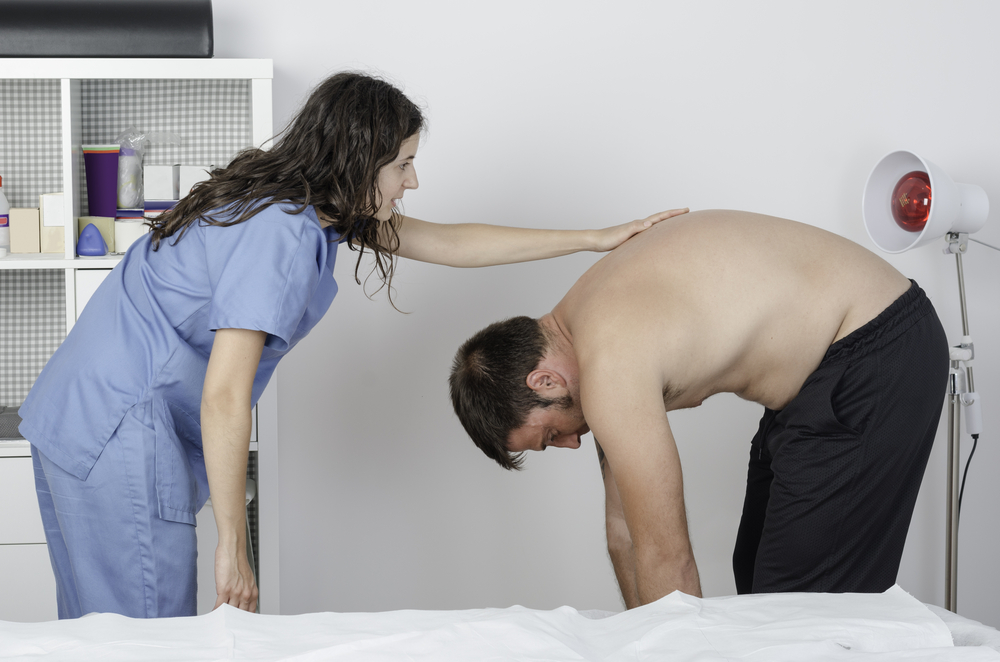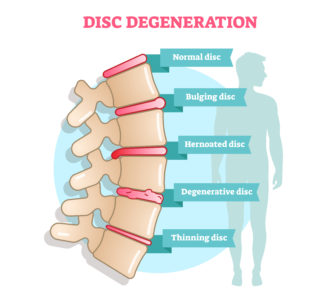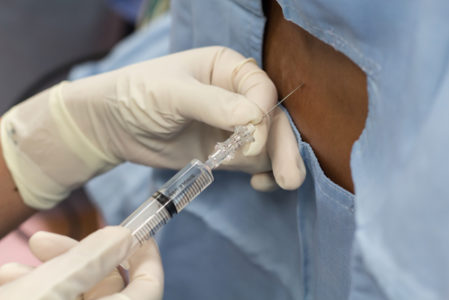
What is Adult Degenerative Scoliosis?
Categories: Back Pain / Diagnosis & Testing / General Orthopedics
Upon hearing the word “scoliosis”, most people instantly think of elementary and middle school children receiving spinal exams. This assumption makes sense, as 80% of patients with scoliosis are children between 10 and 15 years old. However, adults who are well beyond their school years can develop scoliosis as well. Read on to learn more about adult degenerative scoliosis, and how an orthopedics-focused treatment can mitigate painful symptoms.
What is Adult Degenerative Scoliosis?
To fully understand what adult degenerative scoliosis is, we first need to define idiopathic scoliosis. This spinal condition, in which the spine bends horizontally, generally affects people in their adolescent years. In some cases, conditions developed during adolescent years can affect people later on in life. Over time, this bend in the spine can worsen, or lead to worse pain. The cause of adolescent or idiopathic scoliosis is not always apparent, or the same. Poor genetics and pre-existing conditions can leave patients predisposed to scoliosis. With the exception of the cause, adult degenerative scoliosis is very similar to idiopathic scoliosis.
What Causes Adult Degenerative Scoliosis?
Notably, adult degenerative scoliosis has a much steadier build-up than other variants of the spinal condition. From an orthopedic perspective, this long-term development is important.
Throughout life, the spine slowly but surely becomes worn down. This is especially true for people who lift excessively, and those who do not regularly stretch. Obesity and smoking are other lifestyle choices that may pose a greater risk to patients. The discs that are positioned throughout the vertebrae naturally degenerate over time, without the proper orthopedic care.
During the degeneration process, one side of the spine may experience more wearing down than the other. As a result, the spine could lean more heavily to one side than the other. When this takes place, the spine tends to form a C shape, and the spine’s range of motion is decreased.

Symptoms of Adult Degenerative Scoliosis
The symptoms that one might feel as a result of adult degenerative scoliosis can vary by individual. However, the pain does not stem from the curved spine itself; rather, it comes from the inflamed area. The following symptoms are common for patients who suffer from this condition.
- Gradually worsening back pain, which may develop from an ache in the lower or middle back.
- Pain that is intense during the beginning of the day, improves during the middle of the day, and becomes worse again during the end of the day.
- Sitting relieves some of the pain, and walking around or standing can exacerbate it.
- Shortened stature, due to the compromised spine.
Fortunately, an orthopedics specialist can help you to improve your condition, and, in doing so, eliminate pain.
What are the Treatment Options for Adult Degenerative Scoliosis?
Rather than correcting the curve of the spine, the goal of adult degenerative scoliosis is to prevent the disks from further wear. In doing so, you can ease the pain. The most common approach to this is orthopedic care. So, treatments generally involve one or many of these methods, which might treat various components of scoliosis pain.
- Guided stretches: As with other orthopedics endeavors, guided stretches can help the impacted muscles to eliminate pain. Physical therapy can help prevent severe pain, especially when administered on a regular basis.
- Bracing: Braces that are specially fitted for each patient prevent additional pressure from reaching the patient’s spine.
- Osteopathic manipulation: In order to soothe the muscle tissue, an osteopathic manipulation can help in recovery.
- Aqua therapy: Exercising with the water’s natural resistance provides a safe place to stretch the muscles.
- Epidural injections: Receiving spinal injections is a common orthopedic approach to relieving spinal pain. The epidural injections will also treat the inflammation.

- Altered diet: While it may not completely fix the issue, consuming anti-inflammatory foods– like ginger, tumeric, and other supplements– might help. Steadily drinking water is also critical.
- Heat and cold therapy: Both heat and cold therapy can play a part in recovering from adult degenerative scoliosis. The cold pack will aid in reducing the swelling and inflammation, while the heat can help relieve pain. These simple steps will go a long way in supplementing the orthopedic care provided in the office.
As with other spinal conditions, creating a spine-conscious office space is critical.
Adult Degenerative Scoliosis Surgery
As with all treatments, the non-surgical approach is ideal. However, if inflammation continues to intensify, then surgery may be a necessary measure. During these minimally invasive surgeries, orthopedic surgeons utilize advanced technology to locate the exact source of pain.
There are two primary orthopedic surgical methods for treating adult degenerative scoliosis:
- Decompression with fusion surgery: The most common surgical method, this involves taking pressure off of the spinal cord by removing part of the vertebrae. First, the surgeon exposes the targeted area by making a small back incision. After doing so, he or she will remove the bone spurs or discs that might be applying pressure to the spinal nerve. Next, the surgeon will mobilize the spine, and fuse the spine to hold it in the current position with a bone graft. The bone graft allows the spine to continue to grow and hold together, even after the surgery. After the fusion phase, the spine will remain in the balanced position. An experienced orthopedic surgeon can provide outstanding care while administering this procedure.
- Decompression: To relieve pressure from the spinal cord, this surgery focuses on removing a section of the vertebrae. Older patients who would not be able to tolerate the subsequent fusion may just receive a decompression.
Recovery from Surgery
After the surgery, patients are encouraged to rest for several days, with minimal (and heavily monitored) activity.
Orthopedics Long Island
At Central Orthopedics, we are well-equipped to help patients of all ages deal with scoliosis. Our involved and highly specified approach to treatment will ensure that you enjoy a long-term recovery.
